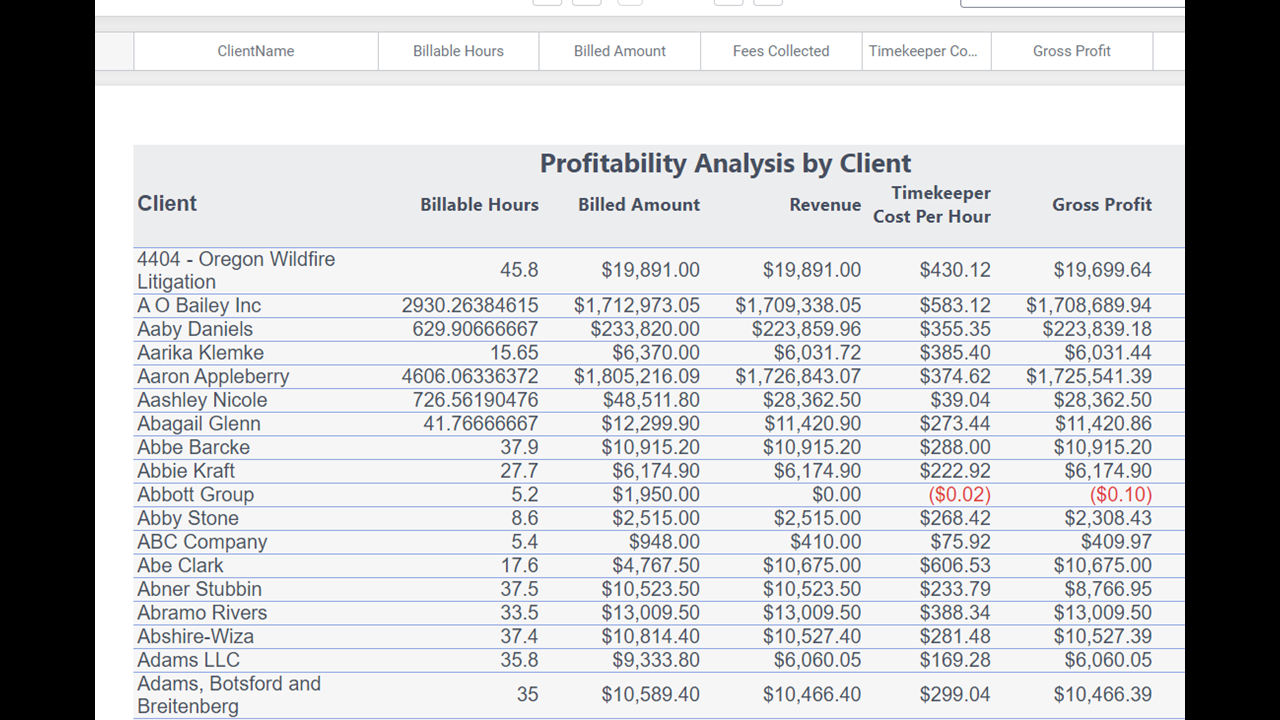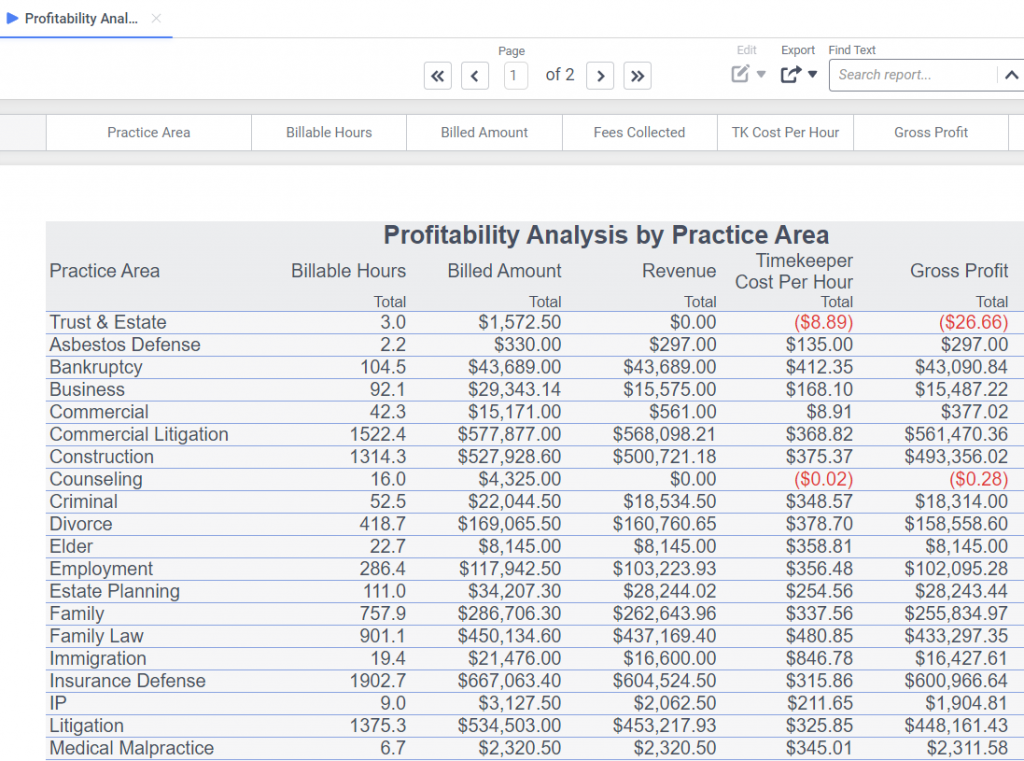Do you really know how profitable your firm is and which timekeepers, clients and practice areas are driving that profitability?
Centerbase, a Dallas-based company providing cloud legal practice management software for mid-sized law firms, says its new profitability reporting capability, launching today, will enable firms to analyze their profitability more precisely than traditional reporting platforms.
It does this by tracking and analyzing key metrics such as revenue, expenses, billable hours, realization rates, and profit margins, so that firms can optimize their profitability and improve their overall financial performance.
Traditional reporting for law firms shows performance by calculating billed versus collected time. But Centerbase says this is a time-consuming, manual process that provides an incomplete picture and delivers only a “best guess” scenario.
“Profitability involves spreadsheets and formulas and lots of reporting and about 6-10 hours of figuring everything out, and even after all that time, it is a guess at best,” said Carol Patterson, who has worked in the legal industry for 25 years, including 10 as a law firm accountant, and is now sales engineer at Centerbase.
By contrast, Centerbase’s profitability reporting allocates exact direct and indirect expenses or costs associated with employees and calculates overhead into the net results – providing a precise and complete picture of actual net profit.
“The difference with law firms is that every single timekeeper is a little profit center — they bring in their own revenue and they have their own expenses — and other software just doesn’t account for that,” Patterson told me during a demonstration last week. “It doesn’t break it down by timekeeper and that’s where Centerbase is different.”
Why Profitability Reporting Matters
Why does this matter? Tracking and analyzing key metrics such as revenue, expenses, billable hours, realization rates, and profit margins is essential for firms to thrive in the current uncertain economic environment, Centerbase says. Firms need to know which timekeepers are critical to retain, what practice areas need expansion, and which matters are truly contributing to the bottom line.
Centerbase’s profitability reporting creates a report that shows profitability by timekeeper, displaying billable hours, billable amounts, revenue, expenses, gross profit and profitability percentage.
For each timekeeper, it includes both direct expenses, such as salary and insurance, and indirect expenses, such as portion of rent and office supplies.
The reporting can also be broken down by client (see featured image above), matter, or practice area. “It starts with timekeeping and then you can run whatever reports you need,” Patterson said.
On the back end, profitability reporting is set up and enabled by the administrator. The administrator can, for example, go to the chart of accounts and choose an expense, such as parking, and decide whether to include it as part of profitability by timekeeper. The administrator can then decide whether to make it a direct or indirect expense, and then assign a share or percentage of that expense to allocate to each timekeeper.
“Every firm is different depending on how they set up their business,” Bob Canaway, chief marketing officer at Centerbase, said. “So having the flexibility to allocate the expenses in the way that supports the firm is really a critical aspect of this.”
Through profitability reporting, firms and timekeepers get the data they need to optimize their financial performance, Patterson said. They can use this information to set billing rates and pricing, identify key timekeepers and practice areas to support, and create accurate budgets.
“Sometimes profitability has to do with compensation,” said Patterson. “Other times, profitability has to do with whether we’re keeping our doors open. Or maybe I’m an attorney and I need to know if my client is profitable, and the answer might be it is profitable as long as I use paralegals, because I’m too expensive.”
“Profitability needs to be very flexible because 100 different firms are going to calculate it 100 different ways,” Patterson said.
If you are interested in learning more about profitability reporting in Centerbase, visit this page.
 Robert Ambrogi Blog
Robert Ambrogi Blog
